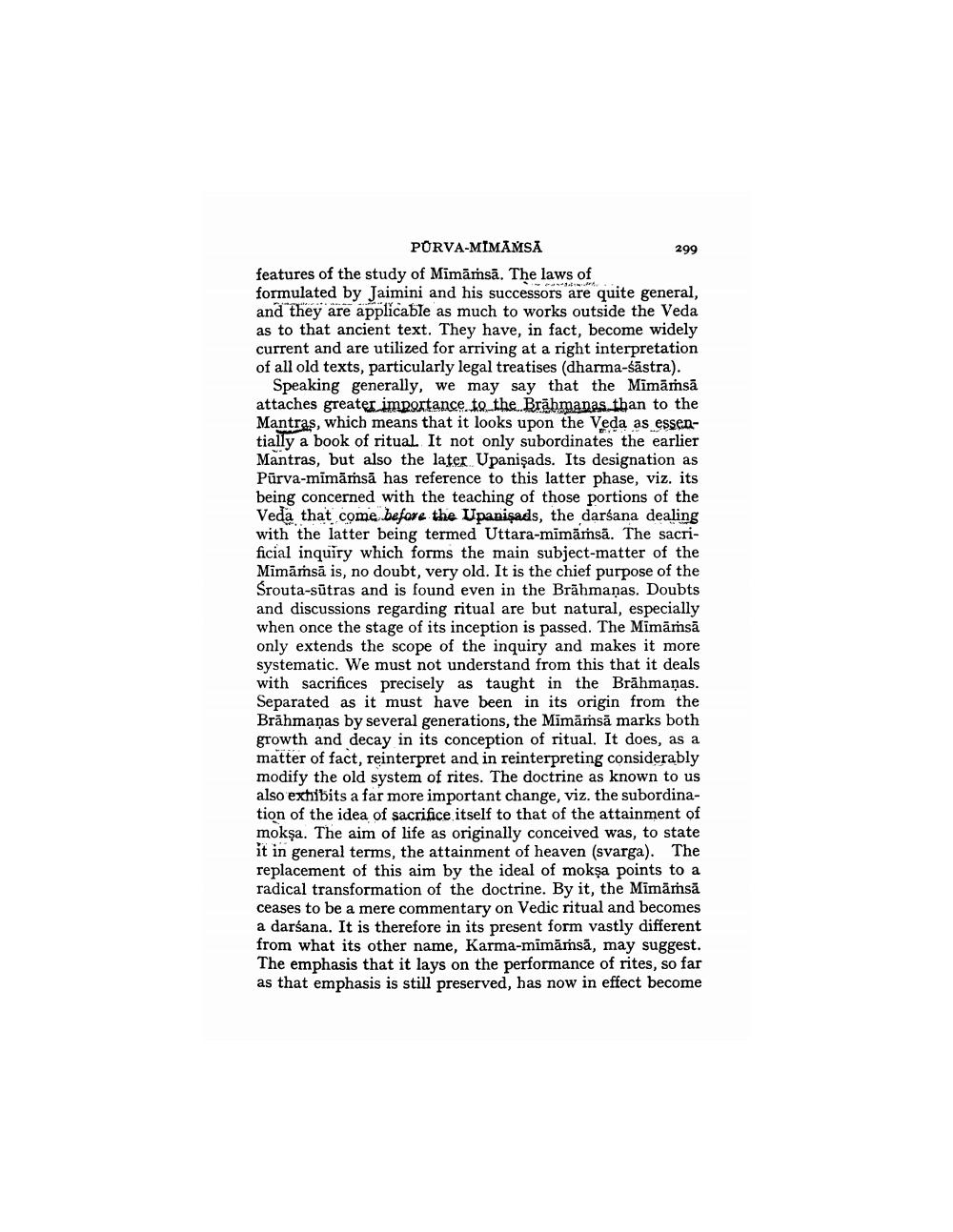________________
PORVA-MIMAMSA
299 features of the study of Mimāṁsā. The laws of formulated by Jaimini and his successors are quite general, and they are applicable as much to works outside the Veda as to that ancient text. They have, in fact, become widely current and are utilized for arriving at a right interpretation of all old texts, particularly legal treatises (dharma-śāstra).
Speaking generally, we may say that the Mimāṁsā attaches greater importance to the Brāhmanas than to the Mantras, which means that it looks upon the Veda as essentially a book of ritual. It not only subordinates the earlier Mantras, but also the later Upanişads. Its designation as Purva-mimāṁsā has reference to this latter phase, viz. its being concerned with the teaching of those portions of the Veda that come before the Upanişads, the darśana dealing with the latter being termed Uttara-mimāmsā. The sacrificial inquiry which forms the main subject matter of the Mimāṁsā is, no doubt, very old. It is the chief purpose of the Srouta-sūtras and is found even in the Brāhmaṇas. Doubts and discussions regarding ritual are but natural, especially when once the stage of its inception is passed. The Mimārsā only extends the scope of the inquiry and makes it more systematic. We must not understand from this that it deals with sacrifices precisely as taught in the Brāhmaṇas. Separated as it must have been in its origin from the Brāhmaṇas by several generations, the Mimāmsā marks both growth and decay in its conception of ritual. It does, as a matter of fact, reinterpret and in reinterpreting considerably modify the old system of rites. The doctrine as known to us also exhibits a far more important change, viz. the subordination of the idea of sacrifice itself to that of the attainment of mokşa. The aim of life as originally conceived was, to state it in general terms, the attainment of heaven (svarga). The replacement of this aim by the ideal of mokṣa points to a radical transformation of the doctrine. By it, the Mimāmsā ceases to be a mere commentary on Vedic ritual and becomes a darśana. It is therefore in its present form vastly different from what its other name, Karma-mimāṁsā, may suggest. The emphasis that it lays on the performance of rites, so far as that emphasis is still preserved, has now in effect become




